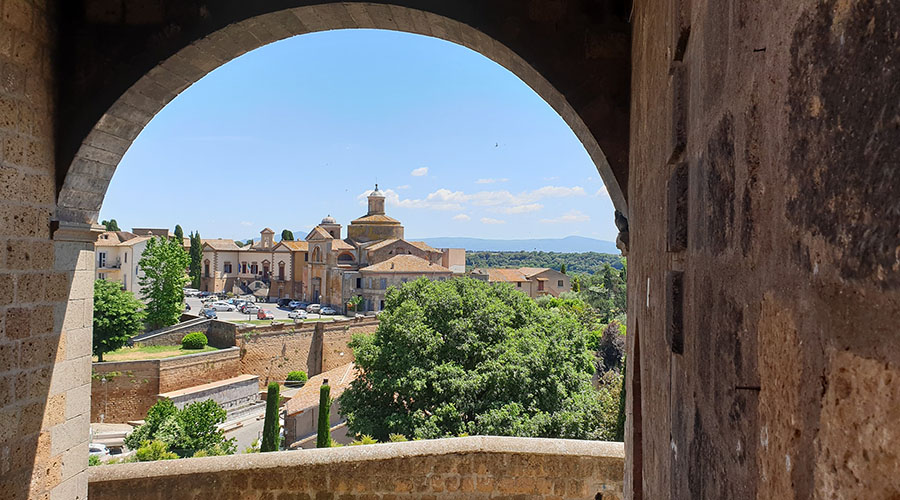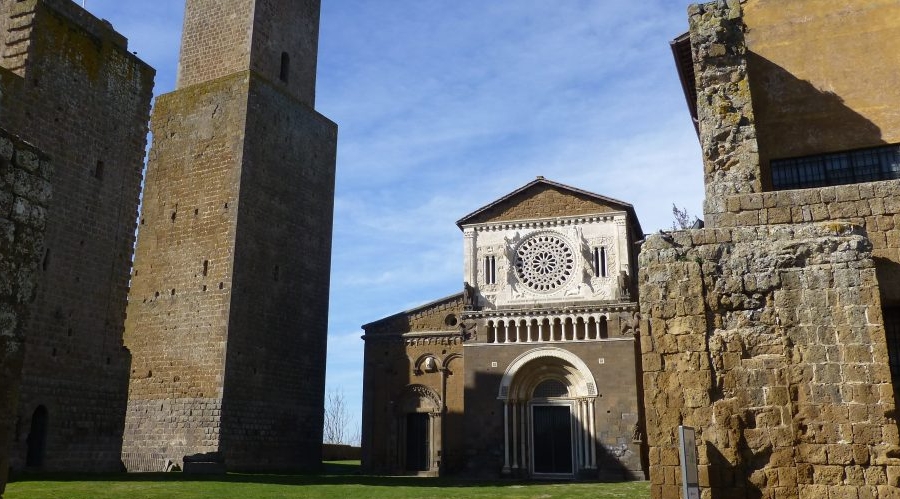A suggestive medieval town, Tuscania stands on seven promontories of tufaceous rock 180 meters above sea level. Located between the Marta River and the Capecchio Torrent, it has dominated, since ancient times, the great communication route that reached from the Tyrrhenian Sea as far as Lake Bolsena.
It is one of the most beautiful landscapes of Tuscia (ancient southern Etruria) that can be enjoyed from the medieval walls of Tuscania, a city of art in the province of Viterbo, surrounded by sweet and intact countryside, largely protected as a nature reserve.
To start from the knowledge of its past, one must visit the Tuscan National Museum which collects sarcophagi in nenfro and clay (in terracotta characteristic of Tuscania) and funerary objects found in the tombs of the most important families of Tuscania, between the fourth and second centuries BC.
At the end of the nineteenth century it was customary to use the sarcophagi found in the tombs as urban furnishings, so it is not surprising to find them also in the central Piazza Basile, seat of the Town Hall, but also in churches and historic buildings.
Another pleasant place in Tuscania is Piazza Bastianini, dominated by the seventeenth-century Fontana Grande and the Duomo. Do not miss the two splendid basilicas of S. Maria Maggiore and S. Pietro, just outside the circle of the walls.Known above all for the two basilicas of San Pietro and Santa Maria Maggiore, authentic masterpieces of Romanesque architecture, Tuscania offers numerous ideas for visit. First of all, the ancient village in its entirety, perfectly preserved and where you can still breathe a medieval atmosphere of rare charm.
More information
Tuscania in addition to the perfectly preserved ancient village where you can still breathe a medieval atmosphere of rare charm, offers other attractions not to be missed.
Tuscania is scattered with Etruscan necropolis.
The Church of San Pietro is also remembered as the Church of Films, as it was used as the scenographic system of many famous films such as Mario Monicelli’s Armata Brancaleone, Uccellini and Uccellacci with the great Totò or Romeo and Juliet by Zeffirelli.






